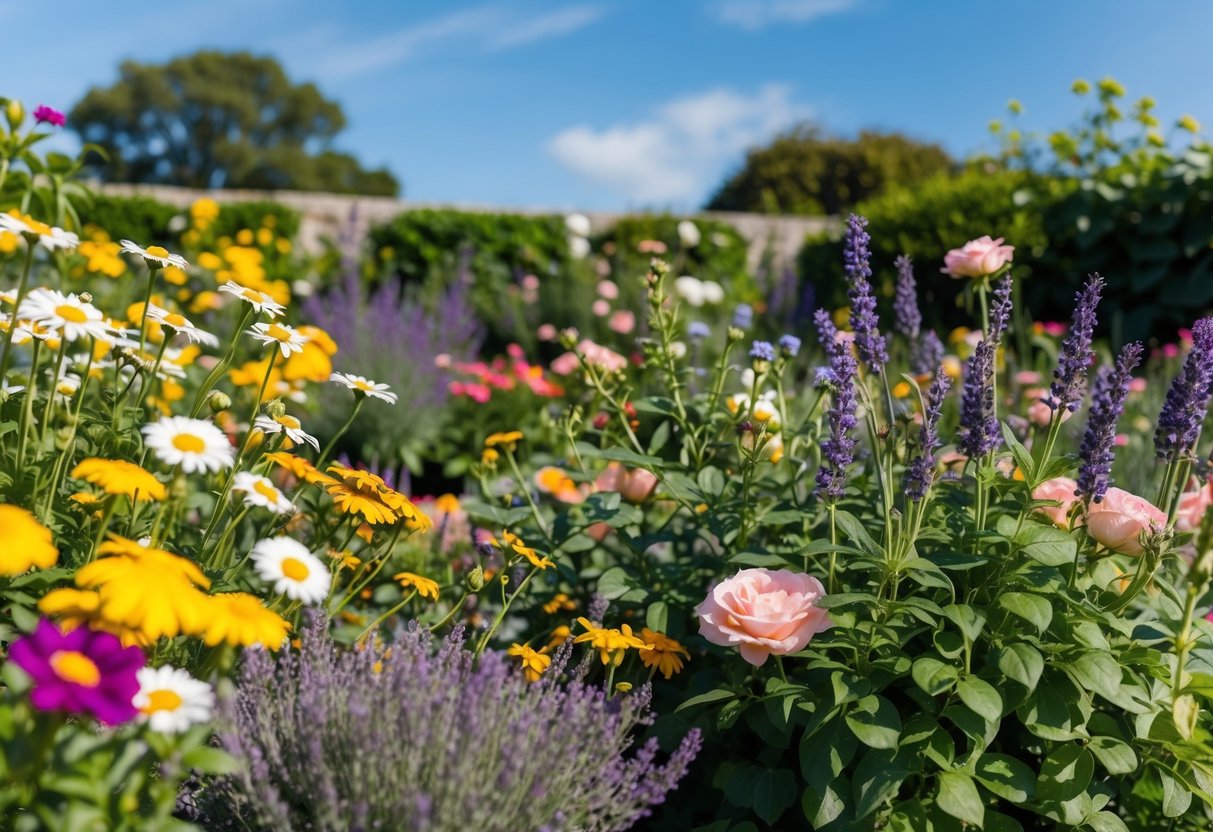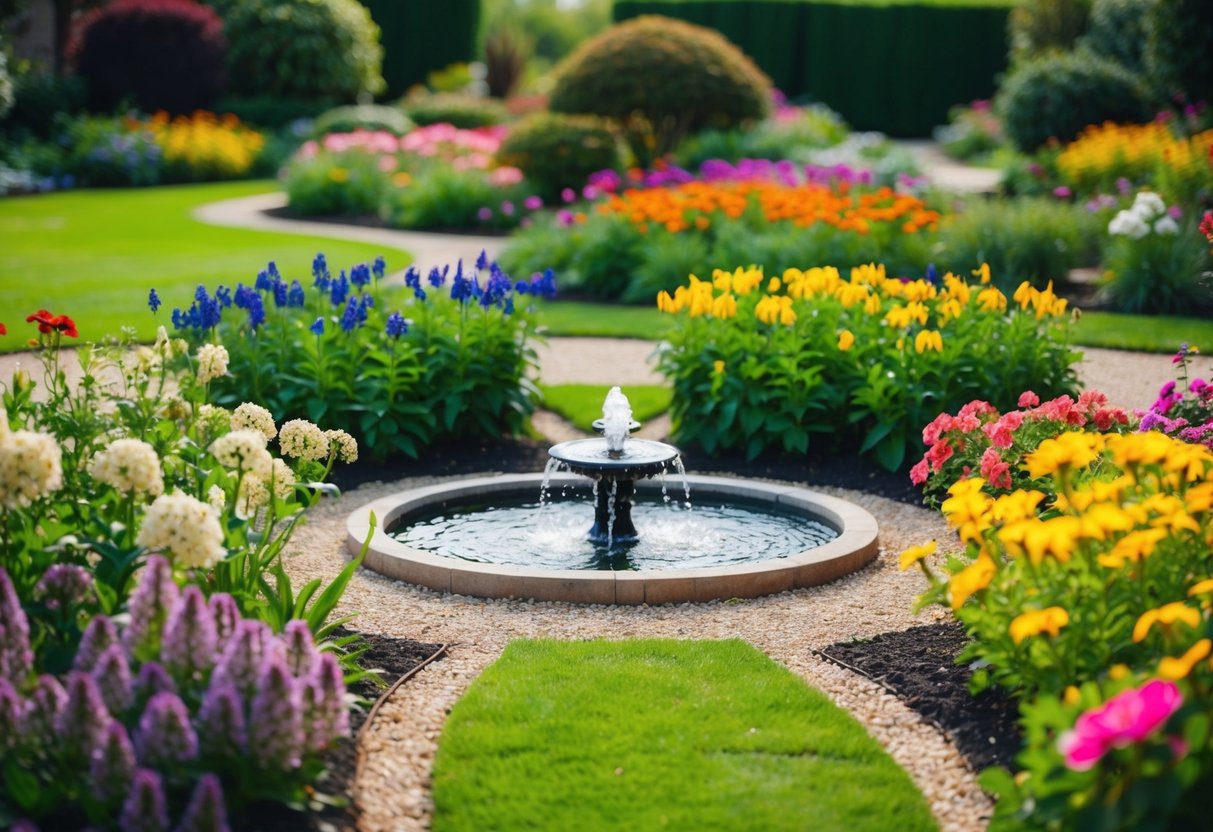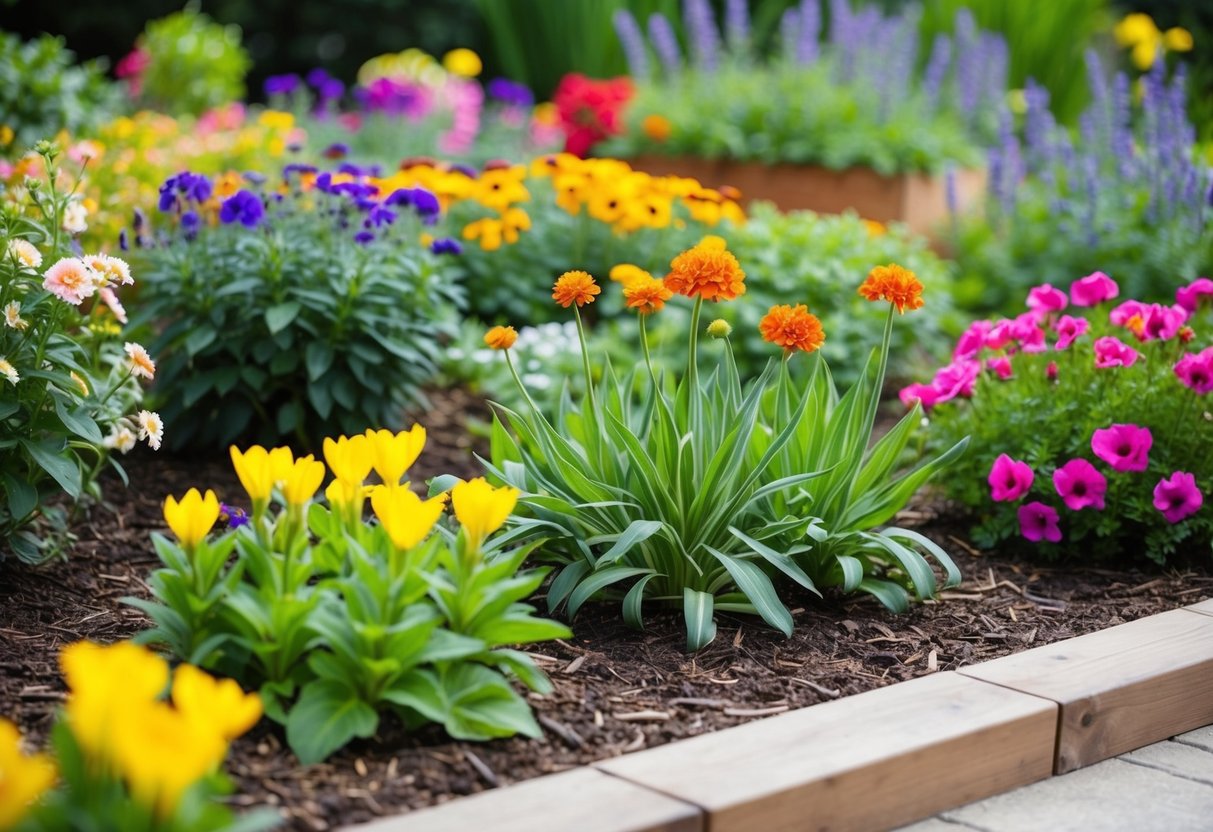What Are the Best Perennial Flowers to Plant for Vibrant Year-Round Gardens?
If you’re looking to add lasting beauty to your garden, perennial flowers are a great choice. These plants come back year after year, making them a favorite among gardeners. Some of the best perennial flowers to consider include lavender, black-eyed Susans, and irises, known for their vibrant colors and ease of care.

Imagine having a garden bursting with color, yet needing minimal effort on your part. Popular perennials like purple coneflowers and irises not only provide stunning blooms but also attract pollinators. These choices offer a unique blend of beauty and functionality, making your garden a visual masterpiece.
Easy-to-grow perennials are perfect for both beginner and experienced gardeners. These plants thrive in various conditions, ensuring your garden remains lively throughout the seasons. Embrace the diversity of perennial flowers and enjoy a garden that grows more beautiful each year.
Choosing the Right Perennials for Your Garden

Picking the right perennials for your garden involves considering sunlight, soil types, and bloom times. These factors impact the health and beauty of your flowering perennials by aligning with their growing conditions.
Assessing Sunlight and Shade
Evaluating the amount of sunlight your garden gets is crucial. Some perennials thrive in full sun, which means they need at least six hours of direct sunlight each day. Plants like lavender and yarrow often perform best in such conditions.
On the other hand, certain perennials prefer shadier spots. Hostas and ferns can handle areas with less light, making them ideal for gardens with lots of shade. Consider how much light each spot in your garden receives to choose the right plants.
Understanding the light needs of your plants can help ensure they bloom beautifully and stay healthy. Take some time to assess the light throughout your garden, as it can change with the seasons.
Understanding Soil Types
Soil type plays a big role in how well your perennials grow. Well-drained soil is often preferred for many garden plants. It helps prevent waterlogging, which can lead to root rot. Some plants, like agastache, are well-suited for these conditions and thrive when soil is neither too wet nor too dry.
If your garden tends to have more average soil, you can work in some compost to improve its quality and drainage. Knowing whether your soil is sandy, clay-like, or a rich loam will help you select perennials that are best suited to your garden’s conditions.
Making small adjustments to your soil, such as adding organic matter, can greatly improve its quality and benefit the plants you choose to grow.
Considering Bloom Times
Bloom times refer to when each plant flowers. Staggering bloom times throughout the seasons can keep your garden colorful year-round. Irises, for example, bloom in late spring or early summer, while other perennials may flower in different seasons.
It’s important to plan your garden with bloom times in mind so that you have continuous flowers. Mixing early, mid, and late bloomers ensures a dynamic display of color. Check plant labels or gardening guides to know when to expect blooms.
Having a variety of flowering perennials ensures that your garden remains lively and attractive, providing a feast for the eyes as well as pollinators.
Top Perennial Picks for Every Garden

Perennial flowers are a great choice for any garden as they bring beauty and color year after year. You can choose from a variety of stunning blooms like coneflowers, lavender, and black-eyed Susans that thrive in different conditions, providing both aesthetic appeal and ease of care.
Colorful Coneflowers
Coneflowers are vibrant favorites among gardeners. Known for their daisy-like petals that come in shades of pink, purple, white, and yellow, they attract butterflies and bees, helping to pollinate your garden. This makes them not just beautiful but beneficial, too.
Coneflowers prefer full sun and well-drained soil. They are drought-tolerant, which means less watering for you. These hardy plants bloom from midsummer through fall, providing prolonged color. You can also enjoy them as cut flowers indoors, making them versatile. Being easy to grow, they are suitable for beginners.
Consider pairing them with yarrow or salvia to create a lively color palette in your garden. Their resilience ensures that even with minimal care, your garden can look stunning year-round.
Lush Lavender Varieties
Lavender is a must-have for its fragrant flowers and lush appearance. This plant adds a touch of elegance with its rich purple blooms and aromatic foliage. It’s an excellent choice for planting zones seven through nine.
Lavender thrives in sunny areas with well-drained soil. Its drought resistance makes it ideal for dry climates. Beyond beauty, the scent can be calming, useful for relaxation or DIY potpourri. Plus, it’s deer-resistant, so you don’t have to worry about them munching on your plants.
Consider using lavender alongside astilbe and hellebores for a visually appealing and fragrant garden mix. The lushness it brings will surely enhance the overall charm of your outdoor space.
Radiant Black-Eyed Susans
Black-eyed Susans are known for their bright yellow-orange petals with dark centers. They can brighten any garden and are longtime favorites for many. These flowers are native wildflowers, so they fit well with natural landscapes.
They grow best in full sun and can tolerate various soil types, including those with average fertility or drought conditions. This makes them highly adaptable and easy to maintain. Blooming from midsummer to fall, you get months of vibrant color.
Pair them with plants like peonies or phlox to create beautiful visual contrasts. Their bold color and hardiness mean they will stand out and thrive, making your garden a visual delight.
Creating a Perennial Garden Oasis

Transforming your garden into a perennial oasis is not only beautiful but sustainable. By choosing the right flowers, you ensure continuous blooms, add interesting textures and colors, and make your garden a haven for wildlife.
Designing for Continuous Blooms
Plant selection is key to maintaining continuous blooms. Consider flowers like echinacea purpurea, coreopsis, and sedum. These perennials offer vibrant colors and have different blooming times throughout the season, ensuring your garden is always lively and colorful.
Layer your plants by mixing tall and short varieties. Tall flowers like bee balm can be planted at the back, with shorter blooms like tickseed in front. This setup creates depth and ensures all plants can be seen and appreciated.
Another trick is to plant certain types of perennials that bloom at different times. Blanket flower, for example, blooms from early summer well into autumn, filling in gaps as other plants finish their cycle. This diverse bloom time makes your garden a constant visual pleasure.
Incorporating Foliage and Texture
Foliage adds texture and depth to your garden. Plants with different leaf shapes and colors, such as ferns or heuchera, can create contrast and visual interest even when flowers aren’t in bloom.
Consider using drought-tolerant plants, which often have unique foliage. Many of these, like lavender and artemisia, have silvery leaves that catch the light and offer a striking contrast to the green in your garden.
Mixing textures involves combining broad leaves with feathery ones. For example, you could pair broad-leafed hostas with the delicate fronds of maidenhair ferns. This variety helps create a garden that feels lush and full.
Attracting Pollinators and Wildlife
To attract wildlife, choose plants known for drawing in pollinators. Bee balm and echinacea purpurea are excellent choices for attracting bees and butterflies. These plants are not only beautiful but also provide essential nectar sources.
Native perennials often do best. They are perfectly adapted to your region and provide vital food and habitats for local wildlife. Consider adding plants that produce berries or seeds, ensuring your garden supports animals year-round.
Water features can be an attractive addition, offering birds and small creatures a place to drink. Even a simple birdbath can make your garden more appealing to various species, enhancing the biodiversity in your own backyard.
Care and Maintenance of Perennials

Taking care of perennial flowers involves regular watering, fertilizing, and occasional pruning. By dividing and propagating perennials, you can enhance your garden‘s beauty over time.
Watering and Feeding
Watering plays a vital role in perennial care. You should water new plants more frequently until they establish roots. Established perennials usually need about 1 inch of water per week. During hot or dry periods, increase watering. Always water at the base rather than overhead to avoid fungal issues.
Mulching helps retain moisture and minimizes weeds. Spread a 2-3 inch layer of mulch around your plants. When it comes to feeding, use a balanced fertilizer in spring. Use specific fertilizers like bone meal or fish emulsion for nutrient-deficient soil to give your perennials a boost.
Pruning and Deadheading
Pruning is essential for keeping your perennials healthy and attractive. It encourages more blooms and prevents the plant from becoming overgrown. Cut back dead or damaged stems in early spring before new growth starts.
Deadheading, or removing spent flowers, helps many perennials bloom longer. Use sharp scissors or pruning shears to cut back the flower stem just above a leaf node. This process can prevent the plant from setting seed, putting more energy into growth and blooming instead.
Dividing and Propagating
Dividing perennials is a helpful method to rejuvenate older plants and control their size. Every three to five years, dig around the plant’s root ball and lift it. Divide the parts using a sharp knife or garden spade. Replant the divisions immediately, keeping the roots moist.
Propagation increases the variety of perennials. Start by taking cuttings in spring or early summer. Insert them into a pot with a mix of sand and peat. Cover them with a plastic bag to maintain humidity. Transplant the rooted cuttings into your garden, and you’ll soon have a flourishing display.







